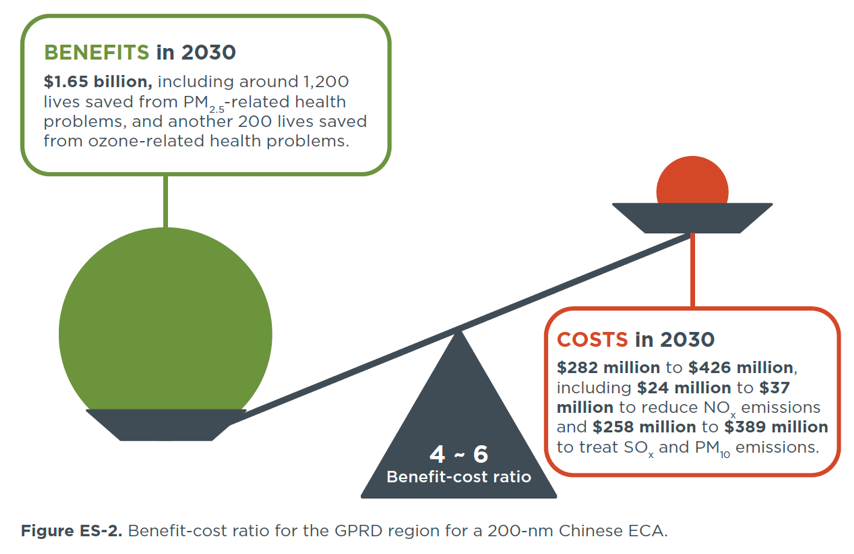Action plan for establishing China’s national emission control area
Report
Costs and benefits of a Pearl River Delta Emission Control Area
Although China has one of the most densely populated coastal areas on Earth and is home to some of the world’s busiest ports, it is not protected by an International Maritime Organization-designated Emission Control Area (ECA). An ECA is a special area in which a country or group of countries can enforce more stringent ship emission standards to improve air quality and protect human health.
To justify an ECA designation, countries must demonstrate both that shipping is a significant source of emissions that have negative health impacts and that the cost of reducing emissions from ships is comparable to land-based controls. As research estimates that at least 22,000 Chinese die prematurely each year as a consequence of ship-related air pollution, this paper analyzes the costs and benefits of a potential Chinese ECA in the Greater Pearl River Delta (GPRD) region.
The study finds that, compared with business as usual, a 200 nautical mile ECA could reduce sulfur oxides (SOx) by more than 70%, particulate matter (PM10) by more than 50%, and nitrogen oxides (NOx) by 12% in 2030. Across the entire GPRD region, implementing an ECA would reduce ambient fine particulate matter concentrations by 2.3% and ground-level ozone concentrations by 1%, both when compared to a no-ECA scenario in 2030.
This translates into substantial health benefits. In 2030, an ECA could avoid about 1,400 premature deaths in the GPRD region, or about one-quarter of all shipping deaths that year without an ECA. The benefit-cost ratio, determined by dividing the monetized health benefits by the costs of compliance, ranges from about 4:1 to 6:1, with net benefits in the range of $1.23 billion to $1.37 billion (2012 U.S. dollars).

Attachments
ICCT_detailed_methodology_pearl_river_delta_20190718.pdf
